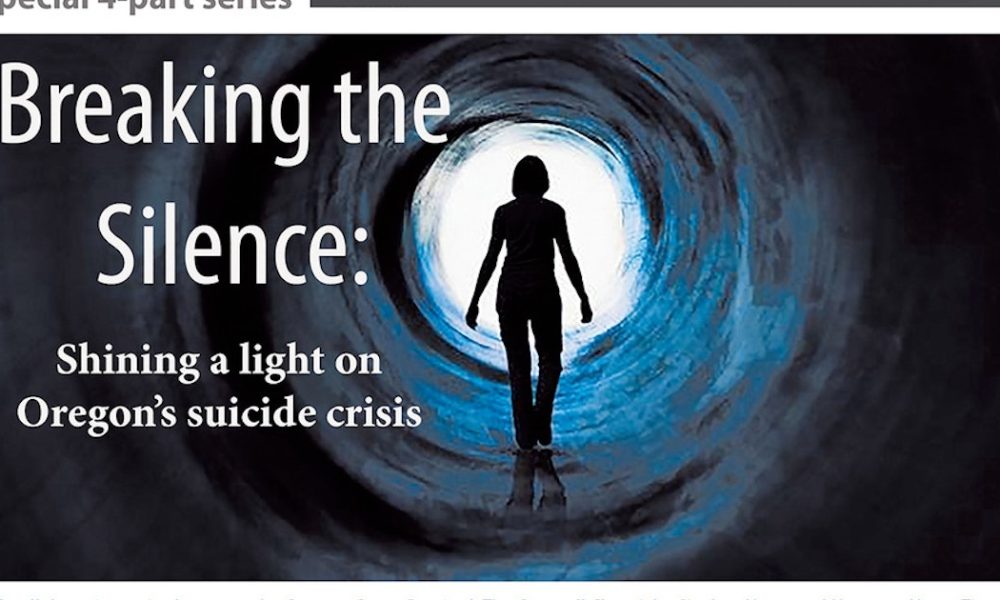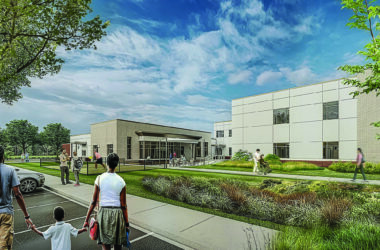 A collaborative series between The Creswell Chronicle, the Cottage Grove Sentinel, Siuslaw News and Newport News-Times.
A collaborative series between The Creswell Chronicle, the Cottage Grove Sentinel, Siuslaw News and Newport News-Times.
Editor’s note: This is the second in a four-part special collaboration between the Cottage Grove Sentinel, The Creswell Chronicle, Siuslaw News and Newport News-Times focusing on the rising suicide rate in Oregon. Each week through April, the four newspapers in this collaboration will each be contributing a part to the series and will be publishing them together. The hope is that, by sharing our resources and readerships, we can begin establishing a dialogue within each of our communities about this important subject.
BY STEPHANIE BLAIR
Of the Newport News-Times
Homeless individuals are 10 times more likely to commit suicide than their general population counterparts, according to the findings of a 2012 study conducted by A. A. Patterson and R. R. Holden.
”We know that people with severe mental illness, or especially psychotic disorders, are more vulnerable,” said Sena Benson-Arb, a clinical counselor in the Lincoln County Behavioral Health office, ”and … our teen population (is) extremely vulnerable to suicide.”
The trifecta of homelessness, health conditions and behavioral health issues is often deadly. Benson-Arb explained that a lack of structure, repeatedly moving from one temporary situation to another, can exacerbate problems in early psychosis patients. This can be worsened by suffering physical health and other instabilities that affect the homeless.
”Mental illness plays a major role in homelessness,” said Amanda Cherryholmes, Program Director for the Lincoln City Resource Center and Emergency Warming Shelter, ”whether it be that someone who becomes homeless due to their mental illness or vice versa that becoming homeless then creates a mental illness. Not having your basic necessities met such as guaranteed meals, shower, clean clothes and a safe place to sleep will cause anyone to develop a mental illness over time.”
According to Maslow’s Hierarchy of Needs, a motivational theory comprising a five-tier model of human needs, the most basic needs are physiological: food, water, sleep, shelter, clothing and so on. Maslow’s theory is that when the base level of those needs aren’t met, a person cannot address higher needs – which are in ascending order: safety, love and belonging, esteem and self-actualization.
”The most common mental illnesses that we see in the homeless population is PTSD, depression and anxiety,” Cherryholmes said. ”Imagine being stuck outside with nothing to eat, no safe place to sleep and the inability to keep clean. Could you possibly stay optimistic like that?”
In a fact sheet released by the National Health Care for the Homeless Council in May 2018, ”Sixty-eight percent of homeless individuals reported that they had experienced psychological distress in the past month. These health issues are exacerbated by exposure to the elements, heightened risk of violence through physical and sexual abuse and a fragmented health system with restrictions on how and to whom care is delivered, which can lead to hopelessness, distrust, misuse of emergency services and self-treatment.”
The fact sheet explained that under those conditions, which already increase the likelihood of suicide in the general population, the compounding factors associated with homelessness place those individuals at much higher risk of suicide.
In Lincoln County, for example, homelessness and a lack of affordable housing is a regular topic of discussion among community groups, at city council meetings and at the county government level – Lincoln County also holds the fourth-highest suicide rate in Oregon. The key to alleviating these pressures is individual support and more access to resources. The 2018 Lincoln County Community Health Assessment lists five main factors that can buffer individuals from suicidal thoughts and behavior: effective clinical care, easy access to a variety of clinical interventions and support, family and community support, support from ongoing medical and mental health care relationships and skills in nonviolent problem solving and conflict resolution.
The theme running through these factors is support: support from the health-care system and from an individual’s community. The stigma around homelessness in addition to the stigma around mental illness can be paralyzing, while support for individuals facing these experiences can be the guiding hand forward – and away from irreversible action.
”I think, as a community, we can do a better job at talking about it, too,” Benson-Arb said. ”We can talk about the elderly person who has had a full life and takes their life, but it’s hard to bring up suicide with kids, teens – so we don’t ask … and I think we continue to stigmatize it when we don’t use plain language.”
On an individual level, education and action are the most direct ways to make change within a community; taking a mental first-aid or suicide prevention class, volunteering with warming shelters and donating clothes or funds to local organizations or DHS programs can all make a difference, as can reaching out to struggling family, friends and frequently seen faces.
Supporting affordable housing efforts and volunteering with organizations such as Habitat for Humanity can also help get more people into homes, providing more stability for families and individuals who are at risk by helping them acquire the most basic human needs identified in Maslow’s Hierarchy.







